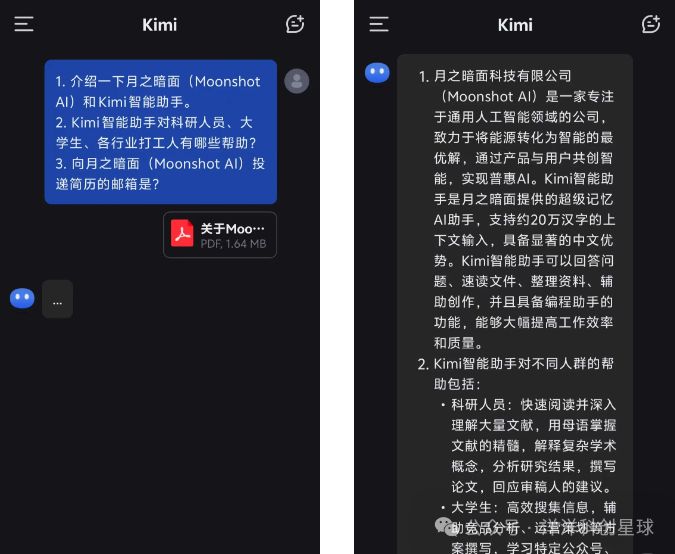文章目录
- 1.用队列实现栈
- 2.用栈实现队列
- 3. 设计循环队列
1.用队列实现栈
225. 用队列实现栈

思路:
使用两个队列,始终保持一个队列为空。
- 当我们需要进行压栈操作时,将数据压入不为空的队列中(若两个都为空,则随便压入一个队列)。
- 当需要进行出栈操作时,将不为空的队列中的数据导入空队列,仅留下一个数据,这时将这个数据返回并且删除即可。
- 判断栈是否为空,即判断两个队列是否同时为空。

C 代码:
typedef int QDataType;//队列中存储的元素类型typedef struct QListNode
{struct QListNode* next;//指针域QDataType data;//数据域
}QListNode;typedef struct Queue
{QListNode* head;//队头QListNode* tail;//队尾
}Queue;
//初始化队列
void QueueInit(Queue* pq)
{assert(pq);//起始时队列为空pq->head = NULL;pq->tail = NULL;
}//销毁队列
void QueueDestroy(Queue* pq)
{assert(pq);QListNode* cur = pq->head;//接收队头//遍历链表,逐个释放结点while (cur){QListNode* next = cur->next;free(cur);cur = next;}pq->head = NULL;//队头置空pq->tail = NULL;//队尾置空
}//队尾入队列
void QueuePush(Queue* pq, QDataType x)
{assert(pq);QListNode* newnode = (QListNode*)malloc(sizeof(QListNode));//申请新结点if (newnode == NULL){printf("malloc fail\n");exit(-1);}newnode->data = x;//新结点赋值newnode->next = NULL;//新结点指针域置空if (pq->head == NULL)//队列中原本无结点{pq->head = pq->tail = newnode;//队头、队尾直接指向新结点}else//队列中原本有结点{pq->tail->next = newnode;//最后一个结点指向新结点pq->tail = newnode;//改变队尾指针指向}
}//检测队列是否为空
bool QueueEmpty(Queue* pq)
{assert(pq);return pq->head == NULL;
}//队头出队列
void QueuePop(Queue* pq)
{assert(pq);assert(!QueueEmpty(pq));//检测队列是否为空if (pq->head->next == NULL)//队列中只有一个结点{free(pq->head);pq->head = NULL;pq->tail = NULL;}else//队列中有多个结点{QListNode* next = pq->head->next;free(pq->head);pq->head = next;//改变队头指针指向}
}//获取队列头部元素
QDataType QueueFront(Queue* pq)
{assert(pq);assert(!QueueEmpty(pq));//检测队列是否为空return pq->head->data;//返回队头指针指向的数据
}//获取队列尾部元素
QDataType QueueBack(Queue* pq)
{assert(pq);assert(!QueueEmpty(pq));//检测队列是否为空return pq->tail->data;//返回队尾指针指向的数据
}//获取队列中有效元素个数
int QueueSize(Queue* pq)
{assert(pq);QListNode* cur = pq->head;//接收队头int count = 0;//记录结点个数while (cur)//遍历队列{count++;cur = cur->next;}return count;//返回队列中的结点数
}/*---以上代码是队列的基本功能实现,以下代码是题解主体部分---*/typedef struct {Queue q1;Queue q2;
} MyStack;MyStack* myStackCreate() {MyStack* pst = (MyStack*)malloc(sizeof(MyStack));QueueInit(&pst->q1);QueueInit(&pst->q2);return pst;
}void myStackPush(MyStack* obj, int x) {if(!QueueEmpty(&obj->q1)){QueuePush(&obj->q1,x);}else{QueuePush(&obj->q2,x);}
}int myStackPop(MyStack* obj) {Queue* pEmpty = &obj->q1;//记录空队列Queue* pNoEmpty = &obj->q2;//记录非空队列if (!QueueEmpty(&obj->q1)){pEmpty = &obj->q2;pNoEmpty = &obj->q1;}//将非空队列中的数据放入空队列中,只留下一个数据while(QueueSize(pNoEmpty) > 1){QueuePush(pEmpty,QueueFront(pNoEmpty));QueuePop(pNoEmpty);}int front = QueueFront(pNoEmpty);//获取目标数据QueuePop(pNoEmpty);//删除目标数据return front;
}int myStackTop(MyStack* obj) {//获取非空队列的队尾数据if (!QueueEmpty(&obj->q1)){return QueueBack(&obj->q1);}else{return QueueBack(&obj->q2);}
}bool myStackEmpty(MyStack* obj) {//两个队列均为空,则MyStack为空return QueueEmpty(&obj->q1) && QueueEmpty(&obj->q2);
}void myStackFree(MyStack* obj) {QueueDestroy(&obj->q1);//释放第一个队列QueueDestroy(&obj->q2);//释放第二个队列free(obj);//释放MyStack
}
C++ 代码:
class MyStack {
public:queue<int> q1;queue<int> q2;MyStack() {}void push(int x) {if (!q1.empty()){q1.push(x);}else{q2.push(x);}}int pop() {queue<int>* qempty = &q1;queue<int>* qnoempty = &q2;if (!q1.empty()){qempty = &q2;qnoempty = &q1;}while (qnoempty->size() > 1){qempty->push(qnoempty->front());qnoempty->pop();}int top = qnoempty->front();qnoempty->pop();return top;}int top() {if (!q1.empty()){return q1.back();}else{return q2.back();}}bool empty() {return q1.empty() && q2.empty();}
};
2.用栈实现队列
232. 用栈实现队列

思路:
使用两个栈,第一个栈只用于数据的输入,第二个栈只用于数据的输出。
当需要输出数据,但第二个栈为空时,先将第一个栈中的数据一个一个导入到第二个栈,然后第二个栈再输出数据即可。

C代码:
typedef int STDataType;//栈中存储的元素类型typedef struct Stack
{STDataType* a;//栈int top;//栈顶int capacity;//容量,方便增容
}Stack;//初始化栈
void StackInit(Stack* pst)
{assert(pst);pst->a = (STDataType*)malloc(sizeof(STDataType)* 4);//初始化栈可存储4个元素pst->top = 0;//初始时栈中无元素,栈顶为0pst->capacity = 4;//容量为4
}//销毁栈
void StackDestroy(Stack* pst)
{assert(pst);free(pst->a);//释放栈pst->a = NULL;//及时置空pst->top = 0;//栈顶置0pst->capacity = 0;//容量置0
}//入栈
void StackPush(Stack* pst, STDataType x)
{assert(pst);if (pst->top == pst->capacity)//栈已满,需扩容{STDataType* tmp = (STDataType*)realloc(pst->a, sizeof(STDataType)*pst->capacity * 2);if (tmp == NULL){printf("realloc fail\n");exit(-1);}pst->a = tmp;pst->capacity *= 2;//栈容量扩大为原来的两倍}pst->a[pst->top] = x;//栈顶位置存放元素xpst->top++;//栈顶上移
}//检测栈是否为空
bool StackEmpty(Stack* pst)
{assert(pst);return pst->top == 0;
}//出栈
void StackPop(Stack* pst)
{assert(pst);assert(!StackEmpty(pst));//检测栈是否为空pst->top--;//栈顶下移
}//获取栈顶元素
STDataType StackTop(Stack* pst)
{assert(pst);assert(!StackEmpty(pst));//检测栈是否为空return pst->a[pst->top - 1];//返回栈顶元素
}//获取栈中有效元素个数
int StackSize(Stack* pst)
{assert(pst);return pst->top;//top的值便是栈中有效元素的个数
}/*---以上代码是栈的基本功能实现,以下代码是题解主体部分---*/typedef struct {Stack pushST;//插入数据时用的栈Stack popST;//删除数据时用的栈
} MyQueue;MyQueue* myQueueCreate() {MyQueue* obj = (MyQueue*)malloc(sizeof(MyQueue));//申请一个队列类型StackInit(&obj->pushST);//初始化pushSTStackInit(&obj->popST);//初始化popSTreturn obj;
}void myQueuePush(MyQueue* obj, int x) {StackPush(&obj->pushST, x);//插入数据,向pushST插入
}int myQueuePeek(MyQueue* obj) {if(StackEmpty(&obj->popST))//popST为空时,需先将pushST中数据导入popST{while(!StackEmpty(&obj->pushST))//将pushST数据全部导入popST{StackPush(&obj->popST, StackTop(&obj->pushST));StackPop(&obj->pushST);}}return StackTop(&obj->popST);//返回popST栈顶的元素
}int myQueuePop(MyQueue* obj) {int top = myQueuePeek(obj);StackPop(&obj->popST);//删除数据,删除popST中栈顶的元素return top;
}bool myQueueEmpty(MyQueue* obj) {return StackEmpty(&obj->pushST)&&StackEmpty(&obj->popST);//两个栈均为空,则“队列”为空
}void myQueueFree(MyQueue* obj) {//先释放两个栈,再释放队列的结构体类型StackDestroy(&obj->pushST);StackDestroy(&obj->popST);free(obj);
}
C++ 代码:
class MyQueue {
public:stack<int> pushST;stack<int> popST;MyQueue() {}void push(int x) {pushST.push(x);}int pop() {int top = this->peek();popST.pop();return top;}int peek() {if(popST.empty()){while(!pushST.empty()){popST.push(pushST.top());pushST.pop();}}return popST.top();}bool empty() {return pushST.empty() && popST.empty();}
};
3. 设计循环队列
622. 设计循环队列

思路:
在环形队列中,队列为空时,队头队尾指向同一个位置。当队列不为空时,队头指向插入的第一个数据,队尾指向最后一个数据的下一个位置。当tail+1等于front时,说明环形队列已满。
注意:
环形队列的队尾不能像常规队列中队尾一样指向最后一个数据,如果这样的话,我们将不能区别环形队列的状态是空还是满,因为此时队头和队尾都指向同一个位置。这就意味着,我们必须留出一个空间,这个空间不能存放数据,这样我们才能很好的区别环形队列的状态是空还是满

我们如果用一个数组来实现这个环形队列的话,上面这三种状态就对应于以下三种状态:

可以看出,此时这个数组和环形完全扯不上关系,这其实很简单,我们只需注意判断两个地方:
- 当指针指向整个数组的后方的时候,让该指针重新指向数组的第一个元素。
- 当指针指向整个数组的前方的时候,让该指针直接指向数组最后一个有效元素的后面。

C 代码:
typedef struct {int* a;//数组模拟环形队列int k;//队列可存储的有效数据总数int front;//队头int tail;//队尾的后一个位置
} MyCircularQueue;MyCircularQueue* myCircularQueueCreate(int k) {MyCircularQueue* obj = (MyCircularQueue*)malloc(sizeof(MyCircularQueue));//申请一个环形队列obj->a = (int*)malloc(sizeof(int)*(k+1));//开辟队列空间//初始时,队头和队尾均为0obj->front = 0;obj->tail = 0;obj->k = k;//设置队列可存储的有效数据个数return obj;
}bool myCircularQueueIsEmpty(MyCircularQueue* obj) {return obj->front == obj->tail;//当front和tail指向同一位置时,队列为空
}bool myCircularQueueIsFull(MyCircularQueue* obj) {int tailnext = obj->tail+1;if(tailnext == obj->k+1)//当指针指到队列末尾时,指针返回队列开头,使队列循环tailnext = 0;return tailnext == obj->front;//当指针指到队列末尾时,指针返回队列开头,使队列循环
}bool myCircularQueueEnQueue(MyCircularQueue* obj, int value) {if(myCircularQueueIsFull(obj))//队列已满,不能再插入数据return false;obj->a[obj->tail] = value;//插入数据obj->tail++;if(obj->tail == obj->k+1)//使队列循环obj->tail = 0;return true;
}bool myCircularQueueDeQueue(MyCircularQueue* obj) {if(myCircularQueueIsEmpty(obj))//当队列为空时,无法再删除数据return false;obj->front++;if(obj->front == obj->k+1)obj->front = 0;return true;
}int myCircularQueueFront(MyCircularQueue* obj) {if(myCircularQueueIsEmpty(obj))//当队列为空时,无数据可返回{return -1;}else{return obj->a[obj->front];//返回队头指向的数据}
}int myCircularQueueRear(MyCircularQueue* obj) {if(myCircularQueueIsEmpty(obj))//当队列为空时,无数据返回{return -1;}else//返回tail-1指向位置的数据{int tailPrev = obj->tail-1;if(tailPrev == -1)//使队列循环tailPrev = obj->k;return obj->a[tailPrev];}
}void myCircularQueueFree(MyCircularQueue* obj) {free(obj->a);//先释放动态开辟的数组free(obj);//再释放动态开辟的结构体
}
C++ 代码:
class MyCircularQueue {
public:vector<int> _a;//数组模拟环形队列 int _k;//队列可存储的有效数据总数int _front;//队头int _tail;//队尾的后一个位置MyCircularQueue(int k) {_k = k;_front = _tail = 0;_a = vector<int>(k+1);}bool enQueue(int value) {if(isFull()) return false;_a[_tail] = value;_tail++;_tail%=(_k+1);return true;}bool deQueue() {if(isEmpty())return false;_front++;_front%=(_k+1);return true;}int Front() {if(isEmpty())return -1;return _a[_front % (_k+1)];}int Rear() {if(isEmpty())return -1;int tailprev = _tail-1;return _a[tailprev == -1 ? _k : tailprev];}bool isEmpty() {return _front == _tail;}bool isFull() {return ((_tail+1) % (_k+1)) == _front;}
};












![[spring源码]spring启动流程](https://i-blog.csdnimg.cn/direct/960e84a862d647faa06c1ba1ba8b5faf.png)





